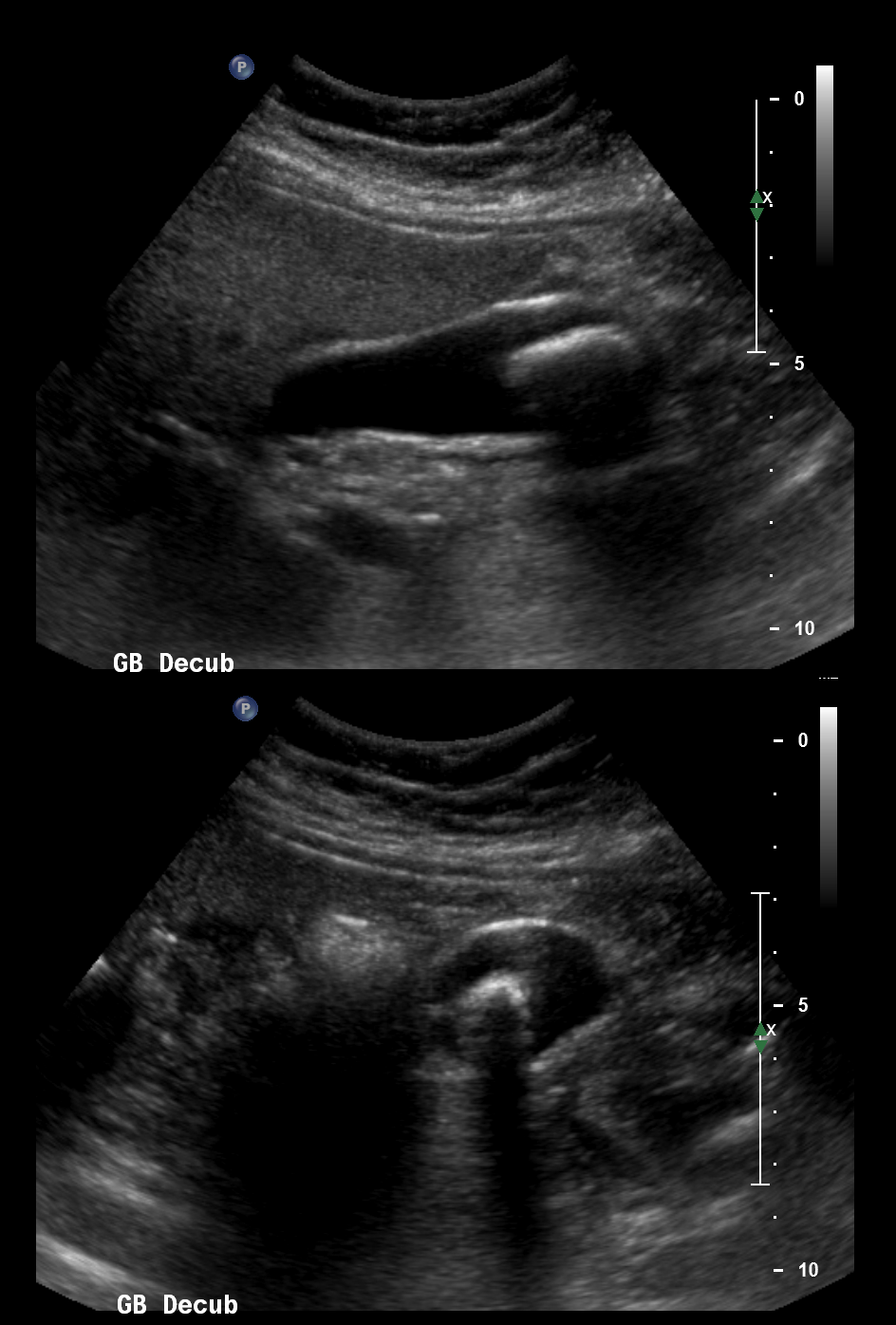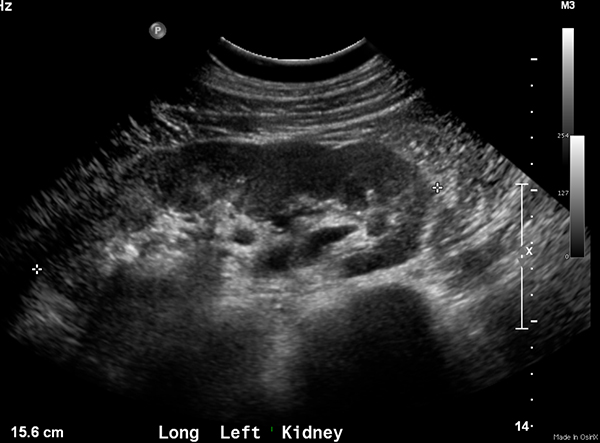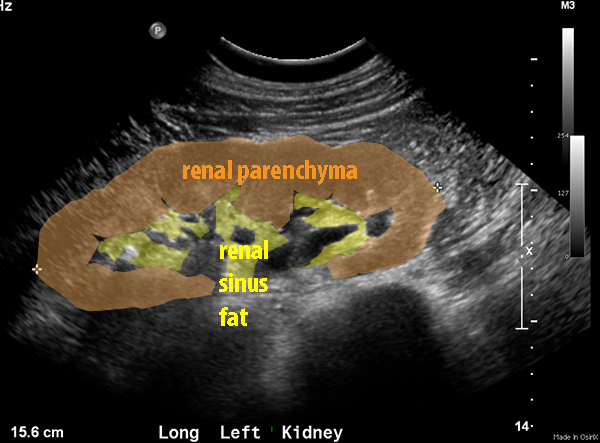
















Transducers
This is the transducer that was used for the session on Cardiac Ultrasound
Question 1:
What are the particular features of this transducer that make it useful for cardiac echo?
Small footprint allows imaging through very small areas (between ribs, adjacent to sternum). Medium frequency allows penetration into deeper tissues, but sacrifices some spatial resolution.
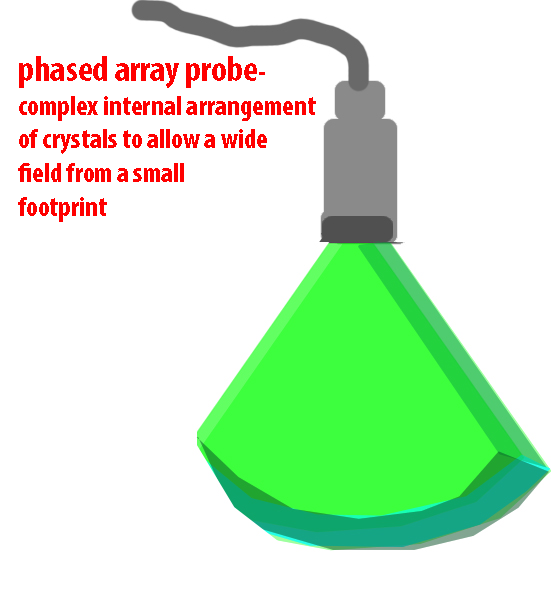
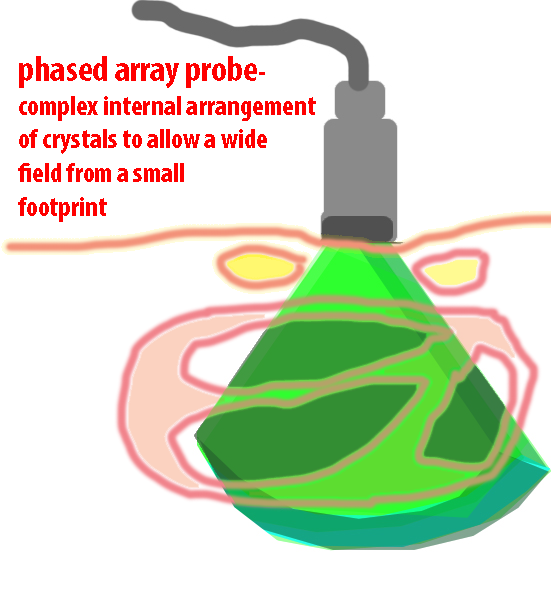
Transducers
This is an image of a linear array probe.
Question 2:
What are the features of this probe, and how can you identify an image obtained with this probe?
This probe has high spatial resolution (due to high frequency) but limited penetration in tissues, so it is best used for structures close to the body surface (breast, testes, thyroid, superficial vessels). You can recognize images obtained with this probe because they are rectangular.
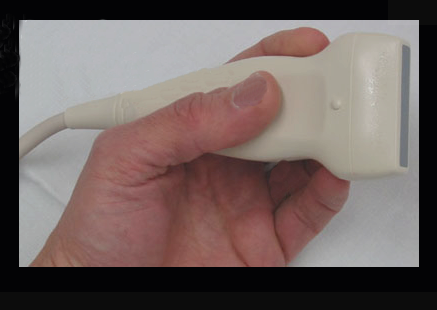
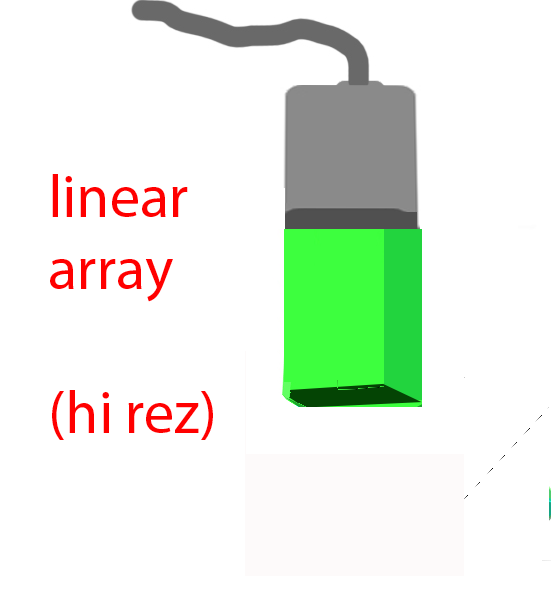
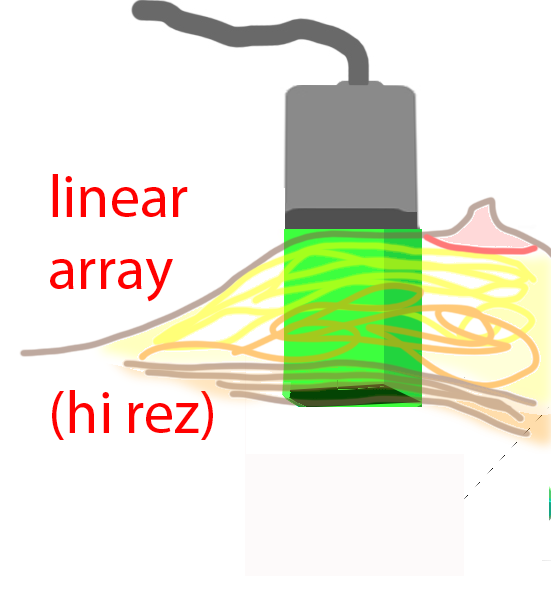
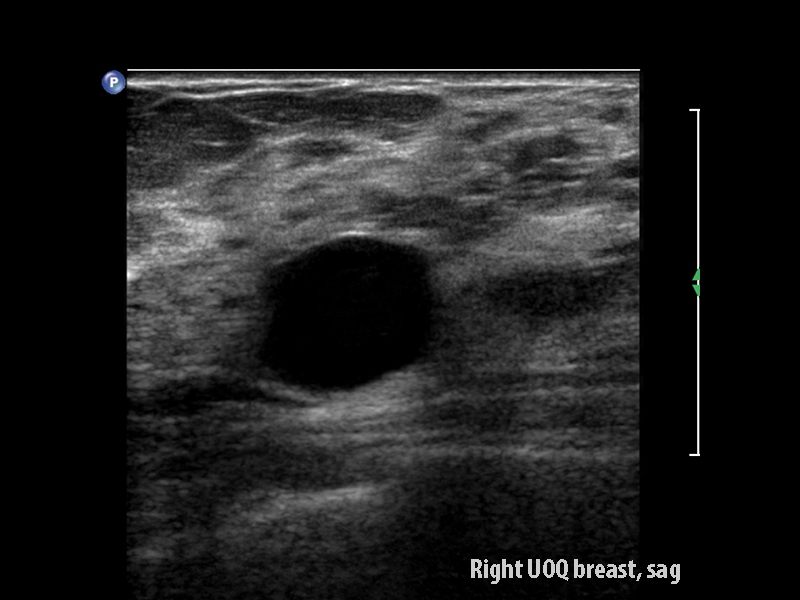
Transducers
This is an image of a curved array (curvilinear) probe, which is used for most abdominal imaging.
Question 3:
What are features of this probe, and how can you recognize images obtained with this probe?
This is a larger, heavier probe with a curved surface and a large footprint. It is usually relatively low frequency, so image resolution is low but penetration into tissue is deep, which is good for imaging abdominal organs. The image that is generated is a curved arc, with a wider arc at the top than for a cardiac probe.


Transducers
These are additional image examples obtained with a curvilinear abdominal probe.
Further Explanation:
